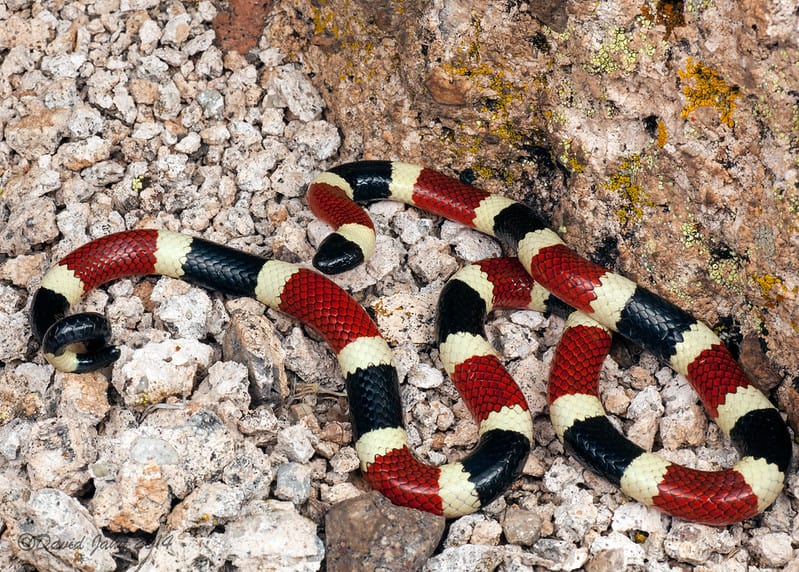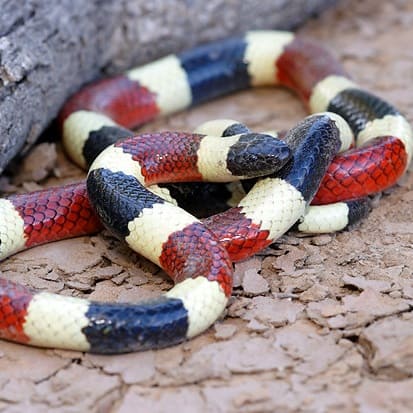Micruroides euryxanthus, commonly called the Arizona coral snake, Sonoran coral snake or Western coral snake is a venomous snake that can be found in the Southwestern United States.
Description
The Arizona coral snake is a coloful snake with the main colors black, red and white or yellow. The scales are smooth, giving the snake a shiny appearance. The snake’s head is black, followed by a white or yellow crossband, then a red crossband and a black band. This black, white/yellow and red pattern continues until the tail. The tail is only black and white/yellow. Given the coloration, the Arizona coral snake is sometimes confused with the eastern coral snake. A great way to tell these two related species apart is by comparing their white/yellow crossbands and the color of their heads. The Arizona coral snake has broader white/yellow crossbands while those of the eastern coral snake are very narrow. The eastern coral snake also has a black-yellow-black-red pattern on the head while the Arizona coral snake has only black-white/yellow-red (the third color is not black).

Next to the eastern coral snake and the Texas coral snake, it is one of three venomous coral snake species that can be found in the United States.
Size
Adult Arizona coral snakes reach an average length of 15-24 inches (38-61 cm).
Diet and Hunting Behavior
The main diet of the Arizona coral snake are reptiles such as small snakes or lizards. Occasionally, they also prey on small mammals such as rats. The snake hunts at nighttime and lies in ambush on tree logs or other elevations. As soon as a prey animal is in striking distance, they snake deals a quick bite and mostly holds onto the animal until it is paralyzed or killed by the venom. The prey is digested as a whole.
Bite and Venom
The Arizona coral snake is a nocturnal animal and encounters with humans are very rare. Most often, the snake comes out of its underground hindings after strong rains. Overall, the snake is not very aggressive and is hesitant to bite even when handled by larger animals or humans. Therefore, even though the snake disposes of a very strong venom, no fatalities related to Arizona coral snakes have been reported. But keep in mind that this is a potentially dangerous animal and should never be handled.

If you are bitten by an Arizona coral snake, seek medical attention immediately. Even if the initial symptoms do not seem severe.
Habitat
The snake lives in underground holes. Most often, it is found in the rocky upland desert regions of Arizona as well as in other arid or semi-arid environments.
Arizona coral snake range in the USA
The Arizona (or Sonoran) coral snake can be found in the southern parts of Arizona and in southwestern New Mexico as well as in Northern Mexico.
Scientific classification of Micruroides euryxanthus
- Kingdom: Animalia
- Phylum: Chordata
- Class: Reptilia
- Order: Squamata
- Suborder: Serpentes
- Family: Elapidae
- Genus: Micruroides
- Species: Micruroides euryxanthus